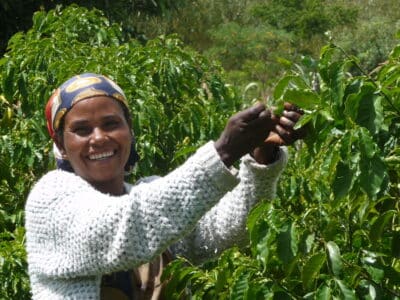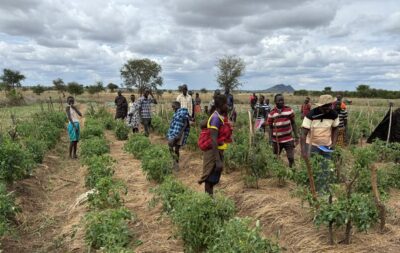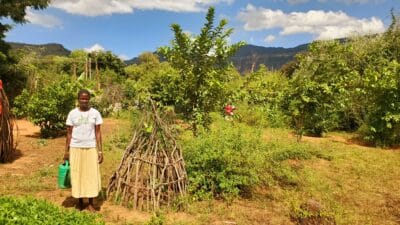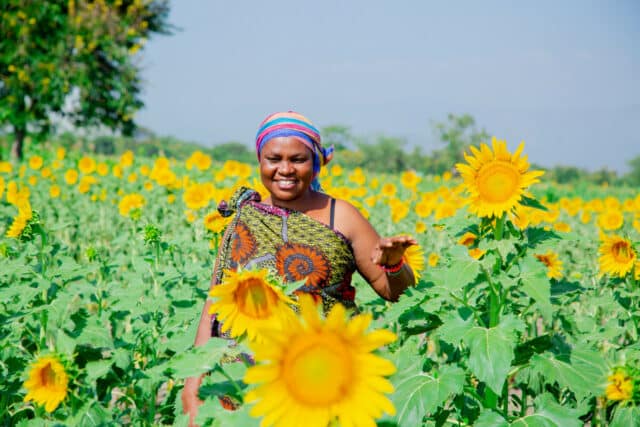News
14 October 2011
World Food Day 2011: global food price rises show need for greater investment in agriculture
Rising world food prices
The World Bank’s index of global food prices, Food Price Watch, recently recorded a rise of 15% in prices in just three months between October 2010 and February 2011. Global wheat prices doubled between June 2010 and January 2011 while maize prices rose by 73% over the same period.
The hike in prices is driving global food insecurity and is placing a severe strain on communities living in poverty and hunger. According to World Bank statistics, rapidly spiralling food prices have driven an estimated further 44 million people into poverty since June 2011.
This volatility in global food prices is exposing increasing numbers of smallholders in eastern Africa to household insecurity and hunger.
Over 80% of people living in remote or rural areas of Africa rely on the food they grow and the animals they keep to survive. Uncertainty caused by fluctuating global food prices means that it is now more important than ever to boost African farmers’ ability to increase food production.
Helping farmers to increase crop yields is important for two reasons: it both reduces the exposure of farmers and their communities exposure to price hikes by ensuring they have enough to eat; and it also enhances their ability to sell surpluses of food to generate additional household income.
What Farm Africa is doing to enable African farmers to respond to rising food prices
As global food security worsens, Farm Africa is enabling African farmers to grow more food. We ensure farmers are equipped with quality, drought-tolerant seeds and the most innovative planting and irrigation techniques, helping farmers to maximise their food yields.
And just as importantly, we are enhancing farmers’ linkages to markets and food supply chains, ensuring that surpluses can be sold at the highest price. This approach is helping African families to build long-term income, effectively breaking long-standing cycles of poverty.
Case study
In western Kenya, almost 60 per cent of households are dependent on fish, either directly or indirectly, as a source of food or income. Lake Victoria is Africa’s largest lake and provides over 90% of Kenya’s total fish supplies. Wild fish stocks in this lake and other lakes in Kenya are dwindling, however, mainly due to overfishing and pollution. As demand for fish outstrips supply, the price of fish is rising. For many people who are already struggling to feed themselves, this shortage is hitting them hard.
The Kenyan government has identified fish farming as a key sector for development as part of its economic stimulus programme. Fish ponds have been dug in 160 out of the 210 parliamentary constituencies in Kenya with the vision of helping smallholder farmers to generate income from aquaculture. The Government of Kenya has invested 4 billion shillings in this Economic Stimulus Programme, providing farmers with fish fingerlings, (young fish) and fish feed.
Farm Africa is supporting the Kenyan government’s drive to develop fish farming. Thanks to funding from the UK Government’s Department for International Development (DfID), we have has established a string of franchised Aqua Shops across Western Kenya.
The Aqua Shops act as hubs, supporting new fish farmers with essential materials such as fish feed and manure as well as technical advice so they can build and develop their businesses. They are also helping fish farmers by providing market intelligence and linking fish farmers to the most appropriate markets for their produce. Watch a video in which Project Co-ordinator, Susan Otieno, explains how the project is helping Kenyan fish farmers develop their businesses.
To date, approximately six hundred farmers have been trained and equipped to set up and run viable fish farming businesses.




